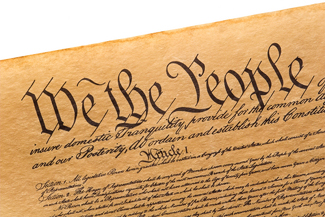Amend Constitutional Amendment Power and Eliminate Political Gridlock, Law Prof Argues

Image from Shutterstock.
New York has had five constitutions since 1938; most states have had an average of three.
Amending the U.S. Constitution, on the other hand, is a “near impossibility,” according to University of Texas law and government professor Sanford Levinson. “If one must choose the worst single part of the Constitution, it is surely Article V, which has made our Constitution among the most difficult to amend of any in the world,” he writes for the New York Times Campaign Stops blog.
To ease congressional gridlock, each newly elected president could be allowed to appoint 50 members of the House and 10 members of the Senate to four-year terms, Levinson writes. In the alternative, the president’s veto power could be reduced or eliminated. Or deadlocks between the two legislative branches could be broken by a supermajority of the House or Congress voting as a whole.
Levinson also has some proposals for the courts. “Perhaps we should emulate North Dakota or Nebraska, which require supermajorities of their court to invalidate state legislation,” Levinson writes. “Why shouldn’t the votes of, say, seven of the nine Supreme Court justices be required to overturn national legislation?”
Other state requirements that could be used as a national model allow the electorate to hold judges accountable, impose a mandatory retirement age, or appoint commissions to limit politicization of judicial appointments.



